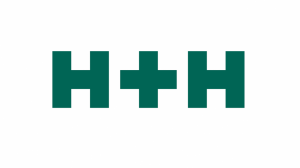Pimco har lavet en stress-test på de østasiatiske banker og konkluderer, at banker i Japan, Sydkorea og Kina rummer mange investeringsmuligheder. De er ikke ramt som under finanskrisen i 2008. De er snarere en del af løsningen for at genoprette økonomien under coronakrisen.
APAC Banking Sector Study: Identifying the Most Resilient Countries
At an aggregate level, banks in Japan, Korea and China fared better under our stress test versus those in India and Australia.
The banking sector has transitioned from being at the epicenter of the 2008 global financial crisis (GFC) to being part of the potential solution following the 2020 COVID-19 outbreak.
We believe that the impact of COVID-19 on banks has been moderate in most APAC countries because of the supportive stance of governments and financial institutions, along with relatively better initial conditions.
Accommodative government policy, coupled with less stringent regulation, has provided banks with adequate time to absorb the potential shock. Despite that, the spreads for APAC financial institutions are wider than their U.S. peers, largely for technical reasons.
This study assesses how banks across Asia Pacific have been affected by COVID-19 and how they performed under our stress test analysis.
Based on this analysis, discussed below, we conclude that Japan, China and Korea may offer attractive investment opportunities with the potential for excess return and defense.
On the other hand, we maintain a cautious approach towards Australian and Indian banks considering the risks of rising nonperforming loans (NPLs) related to structural issues and the ongoing pandemic.
PIMCO’s Regional Bank Stress Test
Our stress test scenario assessed the current financial strength of banks in the region by analyzing how they might perform under a severe global financial crisis, such as the GFC in 2008-2009 and the Asia crisis in 1997 – as discussed above, so far Asia has avoided such a scenario.
Our analysis suggests that in this scenario, we should expect major Asia Pacific banks to suffer an average loss of 50-200 basis points (bps) on their common equity tier 1 (CET1) capital—the core capital banks are required to hold to absorb unexpected losses.
 Image Pop Up
Image Pop UpIt is worth noting that even in our risk case scenario, all regions retained at least high single digit CET1 ratios, so we believe the risk of capital impairment is remote.
We saw a slightly smaller negative impact on banks in Japan, Korea and China in the stress test, but Australian and Indian banks underperformed their regional peers. This is not because Japan, Korea and China are immune from the impact of COVID-19, but rather because we expect widespread use of forbearance (reducing payment amounts) and payment holidays to delay the recognition of potential losses.
Banks’ net interest margins (NIMs) are under pressure. However, Japanese banks have been experiencing pressure on NIMs for decades and offsetting the impact by diversifying their revenue sources. Korean banks are also pursuing revenue diversification and 1H results demonstrate that they are making good progress.
Chinese banks’ earnings are likely to decline this year, but they maintain relatively higher NIMs and return on equity (ROE) that may offer an adequate cushion to absorb losses from NPL write-offs.
We also expect Australian and Indian banks may see negative net income under our stressed scenario, while Japanese, Korean and Chinese banks should be less affected.
We believe that the divergence mainly stems from different initial conditions. While NPLs in Japan, China, and Korea remain near historical lows, NPLs in Australia and India were increasing even before the COVID-19-outbreak. Authorities in India and Australia have cut interest rates, extended debt repayment moratoriums and offered fiscal stimulus packages.
However, we do not view these measures as sufficient to adequately offset the negative asset quality impact from COVID-19, as well as existing structural issues. When banks report large negative net income, the risk that banks skip paying their coupons on their additional tier 1 (AT1) capital is expected to rise because it may trigger capital distribution constraints.










